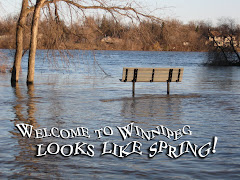
First he united the right! Now, he has united the left!
What more can this man do! Let's not find out.
Go Coalition, Go!
"Where snow falls there are no borders." A view across the border of the US and Canada including economics, poetry, zoology, books, trivia, and religion considered as an engineering practice.




Downturn Drags More Consumers Into BankruptcyThis raises a few questions in my mind.
...the number of personal bankruptcy filings jumped nearly 8 percent in October from September, after marching steadily upward for the last two years, said Mike Bickford, president of Automated Access to Court Electronic Records, a bankruptcy data and management company.
Filings totaled 108,595, surpassing 100,000 for the first time since a law that made it more difficult — and often twice as expensive — to file for bankruptcy took effect in 2005. That translated to an average of 4,936 bankruptcies filed each business day last month, up nearly 34 percent from October 2007...

November 15, 2008, 7:27 amWarren has been researching and documenting why the middle class has been taking it on the chin for 20 years. That's you and me, folks.
Change it’s hard to believe in...
...because it’s such good news. Elizabeth Warren, expert on personal bankruptcy, crusader against credit card industry lobbyists, and founder of the extremely useful blog Credit Slips, to be a member of the bailout oversight board.
Elections have consequences.
Distinguished law scholar Elizabeth Warren teaches contract law, bankruptcy, and commercial law at Harvard Law School. She is an outspoken critic of America's credit economy, which she has linked to the continuing rise in bankruptcy among the middle-class. Series: "UC Berkeley Graduate Council Lectures"Her must-see online talk "The Coming Collapse of the Middle Class", is entertaining as well as sobering. If you view it by way of Miro (a very good video portal) you can save a copy for yourself and your friends. Have them over for popcorn and pizza, make a night of it.
 New York Times Technology section? Yeah, that's the place to slip in a seriously important political story.
New York Times Technology section? Yeah, that's the place to slip in a seriously important political story.More In TechnologyOkay, to be a little kinder I must say this story came to me today in E-mail, as part of the Tech section update. It was actually printed in the NYT paper version: "A version of this article appeared in print on November 11, 2008, on page A19 of the New York edition.
* Judge Rules Against White House in E-Mail Case
* Midway Games Reports Loss
* Sirius XM Takes $4.8 Billion Charge Related to Merger
* Comparing YouTube and Hulu
* VMware Lends Virtual Hand to Mobile Phone Crowd
Judge Rules Against White House in E-Mail Case
Published: November 10, 2008
A federal judge ruled against the Bush administration in a court battle over the White House’s problem-plagued e-mail system. The judge, Henry H. Kennedy Jr. of the United States District Court, said two private groups, Citizens for Responsibility and Ethics and the National Security Archive, may pursue their case as they press the administration to recover millions of possibly missing electronic messages. The administration had argued that the courts did not have the power to order the White House to retrieve any missing messages. A document obtained by The Associated Press in August said the White House was missing as many as 225 days of e-mail dating to 2003 and invited companies to bid on a project to recover them.

Inside the Tent...
Youth: Why do the Democrats let Joe Lieberman caucus with them?
Me: You know, it is the old Lyndon Johnson saying: better to have him inside the tent pissing out rather than outside the tent pissing in.
Youth: But he's inside the tent pissing in!
November 04, 2008 at 07:42 PM
 Rating: Three Laughing Bostons
Rating: Three Laughing Bostons


 Geese
Geese

We also have to pay far more attention to public diplomacy and outreach. Our Afghanistan and Pakistan policy is a mess in part because Osama bin Laden’s approval rating in Pakistan (34 percent) is almost double America’s (19 percent). You know we need a new approach when we lose a public relations competition to a fugitive mass murderer.--Nicholas Kristof

 I was pleased with this comment I wrote over at Echidne's place, so I thought I would transplant it here, too. The discussion ["The Concept of Non-Ownership" (by Phila), Saturday, November 01, 2008] was of interest too, I strongly recommend it.
I was pleased with this comment I wrote over at Echidne's place, so I thought I would transplant it here, too. The discussion ["The Concept of Non-Ownership" (by Phila), Saturday, November 01, 2008] was of interest too, I strongly recommend it.
